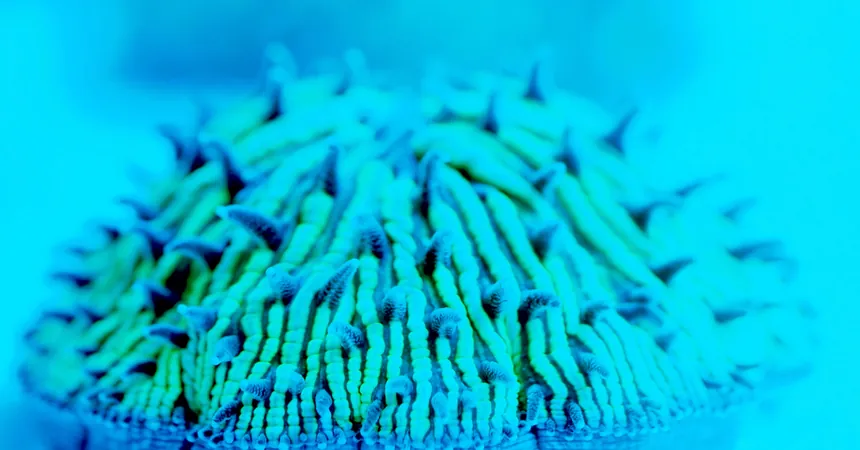
Meet the Amazing Mushroom Corals: The Ocean's Slow-Moving Nomads!
2025-01-22
Author: Ling
Introduction
Corals are among the most captivating organisms in our oceans, showcasing an incredible range of shapes, sizes, and colors. They create expansive reefs that provide sanctuary to countless marine species. However, most corals are known for their stationary lifestyle, as they are primarily colonial organisms comprised of numerous interconnected polyps.
The Exception: Mushroom Corals
But wait! There's a fascinating exception to the rule — enter mushroom corals! Unlike their colonial cousins, these solitary corals possess a remarkable ability to move across the ocean floor, and researchers are only just beginning to unravel their secrets.
Research Insights
Marine ecologist Brett Lewis from Queensland University of Technology in Australia has dedicated his research to understanding these intriguing creatures. “Mushroom corals are small and adorable,” he described, capturing the essence of their charm. In a series of experiments, Lewis discovered that these corals exhibit a distinct preference for blue light, mirroring natural environments found in deeper waters. It’s not just their habitat preferences that are interesting; their movement mechanics are astonishingly similar to jellyfish.
Movement Mechanics
Mushroom corals use a unique method to navigate their surroundings: they inflate and deflate the edges of their bodies, similar to the way jellyfish pulse through the water. Lewis noted, “They can propel themselves forward by essentially popping across the substrate,” which is an incredible feat for such small organisms.
Pacing of Movement
While they may appear spry in time-lapse videos, don’t be fooled; the reality is that mushroom corals are slow movers. During research, a coral successfully traveled approximately 220 millimeters (about 8.7 inches) over one to two hours. "At one point, I thought, ‘This is taking forever!’" Lewis chuckled, highlighting the patience needed to study these corals.
Reasons for Slow Migration
The reasons behind their slow migration are multifaceted. Mushroom corals often start life among densely-packed colonial reefs, which can be tumultuous and restrictive. As they mature, relocating to calmer, deeper waters allows them to thrive and reproduce more effectively. Dr. Bert Hoeksema, a coral taxonomist not directly involved in the research, emphasizes that such movements help them avoid unfavorable conditions, like being buried in sand or outcompeted for space by aggressive neighbors like toxic sponges.
Significance of Movement
While the distances covered by mushroom corals may pale in comparison to the epic migrations of animals like wildebeests or monarch butterflies, it’s essential to understand that, for them, these incremental journeys represent significant achievements. “For these tiny creatures, moving just a few body lengths is like a sprint,” remarked Lewis.
Conclusion
As our understanding of mushroom corals deepens, we uncover the remarkable resilience and adaptability of life in our oceans. Next time you think of corals, remember this: some are on the move, inching their way through the vast underwater world in a painstaking yet fascinating manner!

 Brasil (PT)
Brasil (PT)
 Canada (EN)
Canada (EN)
 Chile (ES)
Chile (ES)
 Česko (CS)
Česko (CS)
 대한민국 (KO)
대한민국 (KO)
 España (ES)
España (ES)
 France (FR)
France (FR)
 Hong Kong (EN)
Hong Kong (EN)
 Italia (IT)
Italia (IT)
 日本 (JA)
日本 (JA)
 Magyarország (HU)
Magyarország (HU)
 Norge (NO)
Norge (NO)
 Polska (PL)
Polska (PL)
 Schweiz (DE)
Schweiz (DE)
 Singapore (EN)
Singapore (EN)
 Sverige (SV)
Sverige (SV)
 Suomi (FI)
Suomi (FI)
 Türkiye (TR)
Türkiye (TR)
 الإمارات العربية المتحدة (AR)
الإمارات العربية المتحدة (AR)